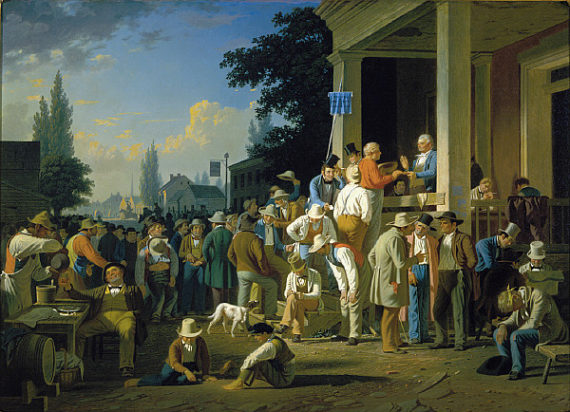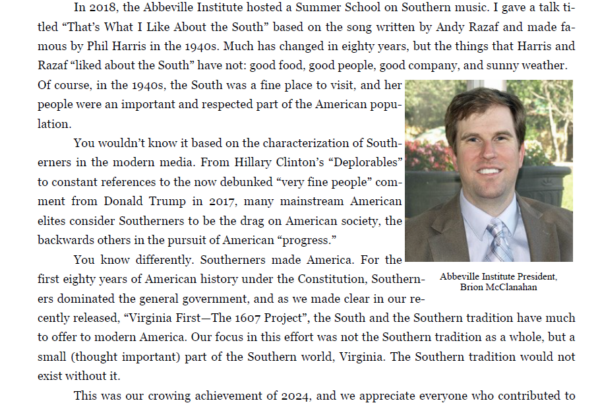
The political chaos that has accompanied President Trump’s first term will not abate anytime soon. From the Russian Collusion hoax to rioting in the streets to the public policy responses to the Covid-19 so-called pandemic, there appears to be something afoot that does not bode well for the future. Whether the motivation is ideological, economic, official incompetence, or a toxic mix of all three, be prepared for chaos qua politics for the foreseeable future. Many are alarmed and have warned about an impending new civil war. The alarm is well warranted by the evidence.
Politics is essentially the struggle for power. The greater the power, greater the prize for those that capture it and greater the loss for those that don’t. The flipside of the cliché “to the victors goes the spoils/plunder” is “to the losers goes the losses/plundered”.
Machiavelli’s insight that the essence of politics is power, and the essence of power is violence is not to be dismissed because this is a “democracy”. Democracy or not, politics, power and violence are intricately intertwined. The violence may not always be visible, but it is always lurking behind the scenes available to the wielders of power against those not complying with their commands. The mere fact that it is available is its most useful quality.
The Confederacy learned this lesson the hard way. Neither the Constitution, a shared history, nor dialogue could stave off the violence that ensued when the opportunity and capacity converged to force compliance to the commands of the United States’ Government. The Confederacy’s defeat in 1865 marked a major turning point in American politics by setting the precedent for the widespread use of horrific violence by the US Government against fellow Americans. Shays and the Whiskey Rebellions were merely precursors of putting down pension and tax revolts. Whereas General Lee’s surrender at the Appomattox courthouse was the culmination of struggles between two competing visions for America, the Jeffersonian State’s Rights vision and the Hamiltonian national supremacy vision. The Hamiltonian vision was being imprinted in the American rule of law from the outset, as the Jeffersonian vision was being blinded by its willingness to play by those rules, e.g., Marbury v. Madison [judicial review], McCulloch v. Maryland [implied powers theory and legislative national supremacy] and Cohens v. Virginia [judicial national supremacy].
The vision thing is important. The 1860 election was the catalyst for the shooting war, preceded by a war of words over competing visions stretching back several generations. By 1860 the South’s Jeffersonian vision had already been rejected at the national level, despite John C. Calhoun’s best efforts to recover it.
The election of 2020 eerily resembles a war of words over competing visions, e.g., Capitalism properly understood versus Communism improperly understood. Similar to 1860, 2020 has a triumphant vision and it is not Capitalism properly understood.
Unlike the Capitalism (Trump) versus Communism (Biden) visions, the Jeffersonian and Hamiltonian visions shared a set of core principles that were not mutually exclusive. Those shared principles made dialogue and collaboration between the two camps possible. Jeffersonians and Hamiltonians agreed that the individual rights in the Declaration of Independence, such as life, liberty and property are inalienable, and that government is instituted to secure these rights. How to secure those rights via the consent of the governed in a State sovereignty federal system is where disagreement morphed into armed conflict in 1861.
Conflict between the heirs of the Jeffersonian and Hamiltonian visions was inevitable, as predicted by the Antifederalists in the 1787 Constitutional Convention. Because State sovereignty and national sovereignty are mutually exclusive, one vision will eventually concede to the other. The concession could be either voluntary or coerced. Four years of war settled, for the time being, the question.
The United States is currently on the verge of another paradigm shift over core principles. Unlike the Jeffersonians and Hamiltonians that shared important core values, the current competing visions are by and large mutually exclusive from the outset. The competing visions can be somewhat distinguished by contrasting two polar-opposite visions of what a just government is.
In 1792 James Madison wrote:
Government is instituted to protect property of every sort; as well that which lies in the various rights of individuals, as that which the term particularly expresses. This being the end of government, that alone is a just government, which impartially secures to every man, whatever is his own.
In 1860 Democrats and Republicans would agree with Madison’s definition of “just government”. The intractable problem was slavery. The slave was a man entitle to fundamental rights, but the slave owner had a property right in the slave’s labor. Slavery notwithstanding, Republicans and Democrats agreed on the fundamentals.
The same is not true for 2020. There is a wide gulf between two opposing visions.
In 2019 Democrats in the 116th Congress passed a resolution “Recognizing the duty of the Federal Government to create a Green New Deal” which is socialistic/communistic in its orientation. It reads in part,
Whereas the House of Representatives recognizes that a new national, social, industrial, and economic mobilization on a scale not seen since World War II and the New Deal era is a historic opportunity to create millions of good, high-wage jobs in the United States; (2) to provide unprecedented levels of prosperity and economic security for all people of the United States; and (3) to counteract systemic injustices: (1) it is the duty of the Federal Government to create a Green New Deal….
For the sake of argument, assume that the Democratic Party is controlled by factions determined to transform the United States into a Socialistic/Communistic nation, using the Green New Deal as a ruse to that end. [The Democratic Party’s endorsement of the Green New Deal should assist in making the assumption.] It would be naïve to think that if the opportunity and capacity converged, violence against the resistance would not be used. The application of violence could range from monetary fines, property confiscation, imprisonment and, if necessary, death for the most obstinate resisters.
If informed consent is absent, coerced compliance equals violence. A prerequisite of coercion is the power to coerce. For example, a person pays taxes because the potential consequences of not paying outweigh the pain of paying. Such a taxpayer has been coerced into paying taxes. If the government’s coercive powers to enforce the tax code is eliminated, compliance with the tax code would be on a voluntary basis.
Even if the Green New Deal were (the subjunctive tense is being used for an obvious reason) in the public interest, only an unjust government would implement it in the absence of the informed consent of the citizenry. The Green New Deal could not be implemented by a government whose only function is to protect private rights, including property rights. However, when those with power have the opportunity to force their policy preferences upon civil society, they will not be stopped by Madisonian principles or constitutional constraints. They will reinvent government accordingly.
The same was true for a State deciding to secede from the Union in 1861. Arguments about the constitutionality of secession were largely irrelevant in the Lincoln Administration. What made war possible was the accumulation of political power under Lincoln’s control whereby he could issue to the southern States the command YOU SHALL NOT SECEDE and coerce compliance. Lincoln reinvented the government from one based upon the consent of the several States to one designed to serve his policy aims, i.e., preserve the Union with or without the consent of the States.
If in the antebellum era the Democratic Party had the foresight to sufficiently remove the US Government’s power to invade the Confederacy, reconciliation between the sections would have been the outcome, either pre or post the secession movement. Lincoln’s reinventing efforts would have failed.
Southern statesmen realized for generations that they were engaged in political warfare with the North. They also realized that the drumbeat of a hot war grew correspondingly louder as more and more power trickled into a central government increasingly falling under the control of the Northern States.
By 1861 experience had informed Southern statesmen the necessity and the means to protect their own newly formed central government from the same fate. This is manifested by the innovations incorporated into the C.S.A. Constitution. [This turned out not to be a blessing but a curse. A decentralized militarily unprepared Confederacy was engaged in a life and death struggle with a centralized more powerful US Government. A decentralized Confederacy would have been a blessing had President Lincoln adhered to the core principles of the 1776 Declaration, leaving the Confederate States to be self-governing.]
The slavery issue was used then, and today, as justification for the use of force against the Confederacy. Even more so today than by Lincoln. Slavery would exist to this day had Lincoln not crushed the Confederacy, so goes the claim.
Such a justification for Lincoln’s war policies against the Confederacy is nonsense on stilts and well beyond the scope of this brief essay to address. Nevertheless, such rhetorical tricks are relevant. Substitute “slavery” with “global warming” and the end results are similar, i.e., the use of government violence to achieve a “greater” good.
The point of this essay is neither to analyze the peculiar institution nor climate change, but to sound the alert that these United States of America are in the final stages of a genuine American civil war. Current public policy issues, whether high conflict, low conflict, high salient or low salient, are not of primary importance. What is of primary importance is the locus and extent of political power.
The radical Left is on the verge, if not in this election certainly within a few more election cycles, to control the levers of national power. And once they possess the requisite power, the Green New Deal will be front and center. As was the case in 1861, core foundational governing principles are at stake. One plausible way to avert the fate of the Confederacy would be to incorporate into the US Constitution the governing principles underpinning the Constitution of the Confederate States of America, bringing the current US Constitution more in line with the principles of 1776.
Of course, it is those very principles that the Deep State and the radical Left despise. However, if those principles were controlling there would be no Deep State or an empowered Left on a national scale. True, some States would have their respective deep states and an empowered radical Left, but that’s regional, not national in scope. In a Union organized along Confederate principles, California and Alabama could coexist in a confederated relationship, as did Massachusetts and Alabama in the 1820s.
To follow are some Confederate constitutional provisions which if amended into the US Constitution would hamper the radical Left and impending paradigm shift:
1. To lay and collect taxes, duties, imposts, and excises for revenue, necessary to pay the debts, provide for the common defense, and carry on the Government of the Confederate States; but no bounties shall be granted from the Treasury; nor shall any duties or taxes on importations from foreign nations be laid to promote or foster any branch of industry; and all duties, imposts, and excises shall be uniform throughout the Confederate States. Article I, section 1).
2. State legislatures by a two-thirds vote could impeach any federal judge or officer within the State (Article I, section 5).
3. Congress shall appropriate no money from the Treasury except by a vote of two-thirds of both Houses, taken by yeas and nays, unless it be asked and estimated for by some one of the heads of departments and submitted to Congress by the President . . . (Article I, section 9).
4. All bills appropriating money shall specify in Federal currency the exact amount of each appropriation and the purposes for which it is made; and Congress shall grant no extra compensation to any public contractor, officer, agent, or servant, after such contract shall have been made or such service rendered (Article I, section 10).
5. Every law, or resolution having the force of law, shall relate to but one subject, and that shall be expressed in the title (Article I, section 20).
6. President elected for a six-year term, not re-eligible (Article II, section 2).
7. Upon the demand of any three States, legally assembled in their several conventions, the Congress shall summon a convention of all the States . . . (Article V).
8. Preamble: We, the people of the Confederate States, each State acting in its sovereign and independent character, in order to form a permanent federal government, establish justice, insure domestic tranquility, and secure the blessings of liberty to ourselves and our posterity invoking the favor and guidance of Almighty God do ordain and establish this Constitution for the Confederate States of America.
One through five would make the national government’s budgeting and appropriating process more transparent, accountable to the States and fiscally responsible.
Number six would enhance the executive functions of the President, especially in conjunction with the two-thirds qualification of number four infra.
Number seven would enhance federalism, along the lines of John C. Calhoun’s concurrent majority.
Number 8 explicitly acknowledges State sovereignty, the implicit right of State secession and a compact theory of government, i.e., not a national democracy, with Almighty God keeping a watchful eye on the parties to the compact.
In summary, there is much to be learned from the Confederacy’s experience. The key lesson to be learned is that in the final analysis it’s all about power. The Founding Generation understood this well, and placed constraints on political power through a written constitution stipulating separation of powers, checks and balances, a Bill of Rights and federalism. The framers of the CSA Constitution learned from experience and supplemented their constitution with additional checks. In both cases the parchment barriers were unable to check the abuse of power, more so in the former than the latter.
Another lesson to be learned was the South’s failure to meet danger on the frontier, as admonished by the great Southern statesman John C. Calhoun. Had the South been more proactive in its defense of States rights in the 1840s and 50s, America would have been spared the horrors of an internecine war.
Those two lessons can be combined into one: Proactively limit the powers of the US Government, because within the not too distant future the radical Left will be in control of the that government. The Left’s plans/threats to pack SCOTUS with radical Left justices speaks volumes.
With that in mind, consider three options open to defenders of the principles of 1776 post the 2020 election. Option 1: Degrade the radical Left’s power to impose its agenda once it controls the national government, particularly in regard to preventing secession. Option 2: Fail to degrade centralized power and put up a futile resistance to a Leftist controlled national government. Option 3: Submit to the radical Left and its agent the national government.
Option 3 seems to be the most plausible in the wake of a Biden victory, as is evidenced by his support in the electorate and the ruling class. Whereas a Trump victory would buy time to operationalize aspects of Option 1, as is evidenced by Trump’s willingness to engage in battle against the Deep State, globalists and his support for Middle America values.
History may not repeat itself, but in the words of Mark Twain it certainly rhymes. Similar to Horatius single-handedly holding back the Etruscan army, Trump is holding back the Deep State and radical Left yelling to patriots “Then at least chop the bridge down while I hold them off alone.” Either start “chopping”, option 1 or secession if necessary, or wait for the inevitable Option 3.






